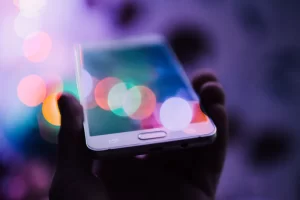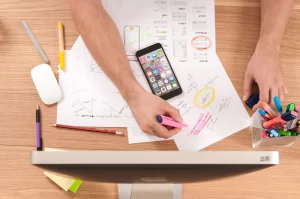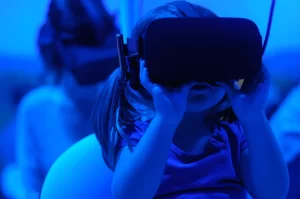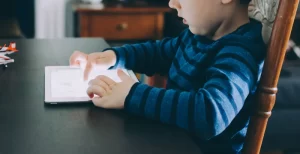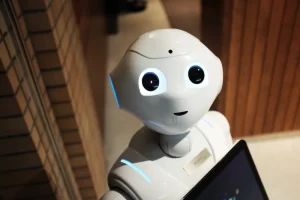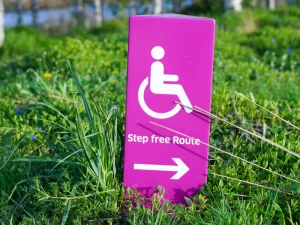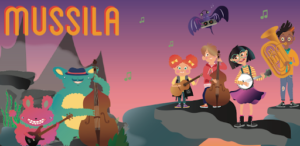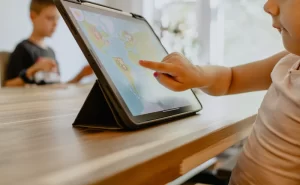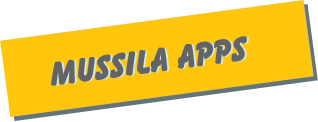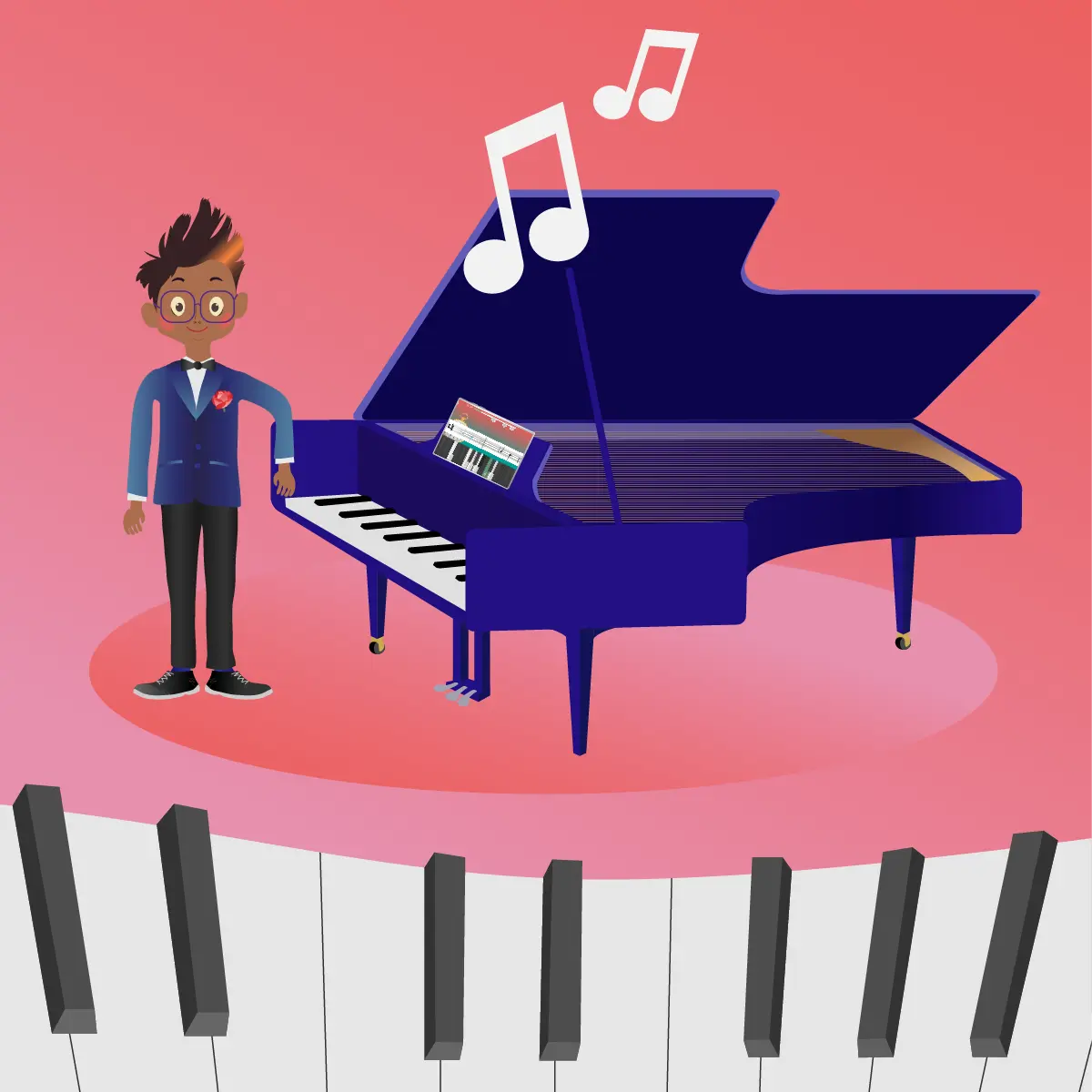By Arctic Meta,
There have been some incredible technological advances in the past century. To take a step back and see just how far humans have come in such a short space of time is awe-inspiring. In 1921 one of the most advanced pieces of technology was the polygraph machine; one hundred years later, a test to see if someone might be lying doesn’t really seem as useful when computer software can already predict human behaviour with startling accuracy.
As technology has advanced, many different sectors have evolved with it, and one particular domain that is already starting to see the benefits of this evolution is education. Digitisation has changed the reality of what is possible with education, and in the past couple of years, most people have witnessed just how essential digital technology has become, especially when it comes to children.
Without digital learning, many kids wouldn’t have been able to progress with their studies throughout the Coronavirus pandemic. It’s become clear that digital learning is not a scary new thing but, in fact, something essential that will continue to influence how children learn.
So how exactly is digital learning going to change schools and education? Why is it changing so quickly? What are the benefits of digital learning? Read on to find out more.
What is Digital Learning?
Digital learning doesn’t mean abandoning reading, writing and maths in favour of turning children into coding machines. To put it simply, digital learning is basically any form of learning that uses technology either in part or entirely. Digital learning is more than just giving students an iPad or laptop to take notes on; it involves an integration of digital technology into the structure of the curriculum.
To understand exactly how digital learning can transform education, it’s necessary to be open to the idea that the traditional classroom can evolve, as most parents saw in the past two years.
Why is Digital Learning Growing So Quickly?
One of the main reasons digital learning is growing so fast is due to the exponential advancements of technology. In the past 10 years alone, technology hasn’t just advanced; it’s also become more widely available. In fact, it’s actually theorised that right now, more people in the world have smartphones than bank accounts.
As the human race continues to innovate, evolve and explore, the advancements in digital learning just keep ramping up in speed. Apart from the advancements in technology, there are a couple of other reasons why digital learning is growing at such a rapid rate.
Easy Access to Expertise
In the past, the reality of having a genuine expert talk to students was, in most cases, a pipe dream. Experts aren’t available in every town on the planet. For example, finding an expert on Icelandic volcanoes to teach kids all about Eyjafjallajökull could be difficult.
They’re probably going to live and work in Iceland so flying them in for an afternoon with a group of fifth-graders is simply out of the question. However, thanks to technology, if timezones permit, getting an Icelandic Volcanologist to speak to a class can be as simple as sending an email.
It’s not just the experts who are closer; it’s also the knowledge they possess. Never before in human history have people had access to accurate and up to date information so quickly and easily. This also means that students can have access to incredibly specific educational materials without the need to leave their countries, cities or even homes.
Variety of Courses Available
For many students, they must wait until they are older, in university or even well into adulthood before they can explore certain streams of education. This can sometimes mean that they enter a field of study later in life without ever experiencing it. This can create problems if the reality of the subject they are studying is different from the idea they had when they were young.
For example, a young student might have dreams of being a psychologist. They might be fascinated by the brain and what makes people think. They wait till they get to university to finally start studying, and they suddenly realise that a large part of the first few years of study is more about writing reports and less about delving into the medulla oblongata.
Thanks to digital learning, many students can sample from a variety of education streams long before they commit to a career path.
Ability to Customise the Learning Environment
Thanks to years of study into methods of education, most experts agree that the kind of learning environment a child studies in can have a dramatic impact on them.
Not every student is the same. They don’t all respond well to sitting in the same chair for 8 hours a day, focusing on a whiteboard. This is particularly important when dealing with neurodivergent students.
Digital learning enables parents and educators to customise a learning environment to suit the specific needs of each student.
Studying At Your Own Pace
Not every person is as productive at the same time every day. There’s also a greater understanding in the modern world that ‘life happens.’ There’s no reason why this shouldn’t also be applied to younger learners.
To get the most out of an educational framework, it’s important to take into account that some kids will pick up concepts or skills quicker than others. In the past, if a child doesn’t completely understand something within the allotted time frame within a curriculum, the teacher has no choice but to move on and hope there’s time later to catch that child up.
Thanks to digital learning, kids can now approach learning at their own pace. They can stick with a concept until they have a thorough understanding of it, and those kids who grasp things quicker can simply move on to something new without needing to wait.
Availability of E-Learning Material
In the past, education was often associated with a whole lot of books. Most adults can remember carrying what felt like mountains of paper in their school backpack every day. In the modern age, this simply isn’t necessary anymore.
Most learning materials are available in a digital format, which saves on environmental resources, space, energy (carrying them around) and also money.
Another added benefit is that most E-learning material is updated regularly, so it will rarely run the risk of containing out of date information.
Reduced Education Costs
One of the most unfortunate things about the education system in the past 100 years is that it has been proven on multiple occasions that the access a student has to money will have a direct effect on their success.
This is slowly starting to change thanks to technological advancements in education. Digital resources are significantly cheaper, and digital platforms also help both parents and institutions to save money. This is believed to be a great step towards levelling the playing field for all students in the future.
Providing a Less Intimidating Environment
Even the best learning environment can be intimidating to a student. Sometimes the typical classroom can be a scary place, and the thought of raising a hand to answer a question is enough to freeze a child solid.
When kids are engaged in an online learning environment, it can be much easier to participate and express ideas and thoughts. This can also assist them in developing more confidence.
Geographic Flexibility
The past few years have brought with them a rise in remote working. People are now able to be more flexible with where they work from, but this same approach can be applied to education. Students can learn from anywhere that has an internet connection.
Efficient Delivery of Lesson Plans
Educators are now able to view, edit and adapt lesson plans in the blink of an eye. They can also have an intricate overview of each student’s progress and what areas they need more instruction in. Utilising digital learning platforms can also allow for consistency in course material when teachers change.
What are the Main Types of Digital Learning?
When it comes to digital learning, it doesn’t need to be an all or nothing approach. There are three main models.
E-Learning
E-learning is generally considered to be a completely digital approach. Students receive all of their instruction online, either via educational platforms or with the assistance of meeting software like Teams or Zoom.
All of their material is digital, and they can usually access it whenever they like. They might have set class times, but in a lot of cases, they can study at their leisure but might need to meet deadlines with assessment.
Blended Learning
Blended learning uses a combination of the traditional education model with elements of e-learning. Classes could take place in a physical classroom full-time or part-time. This is the most common model currently being used for primary and secondary education.
The easiest way to think of blended learning is to see it as the educational equivalent of working from home a few days a week.
Gamification
This could be seen as the sneakier version of e-learning. Gamification takes the elements of play that kids love in things like video games and uses them to achieve an educational goal. The great thing about gamification is that kids are learning but don’t feel like they are necessarily in a class.
How Will Digital Learning Improve Education?
With so many innovations already in place, it is fascinating to wonder exactly how digital learning will improve education in the future. There are quite a few different ways in which the digital revolution is expected to improve learning for students.
Wider Access to Top Quality Teachers
Experts have long agreed that the quality of a teacher is directly linked to student success. It’s hard to admit this because every teacher has their value, but there are definitely some who are more skilled in the profession than others.
In the past, these teachers would most likely be linked to one single location or institution (if that institution is smart). However, thanks to digital innovation, incredible teachers will be able to beam into the lives of students all over the world.
It will also most likely give educators more control over their careers and work choices. This could very likely lead to more gifted people entering the education profession.
Technology Expanding Knowledge Further
There are countless stories of how technology has completely changed the way everyday life is operated. Probably the most notable change is access to knowledge. For many adults today, they don’t even realise that they were brought up during the cusp of technological advancements in education.
During the 80s and 90s, a booming industry thrived; the educational video production industry. Many people remember a teacher rolling out a TV cart so the class could get a more in-depth look at the planets in our solar system, the life-cycle of a butterfly, or even how to perform CPR.
Today and in the future, digital media, simulations and AI are expected to take the possibilities of what students can experience to a whole other level. There are already home versions of things like flight simulators, society generators and even more. Imagine what kids will be able to learn before they’ve even left school in the future.
Reducing Geographical Barriers to Education
As stated earlier, in the past, the location a person goes to school has played a direct role in their success later in life. This hardly seems fair. A child doesn’t pick the location they are born in or the place they live in, so why should their educational opportunities be diminished by this?
With digital learning, in the future, it is hoped that all students have equal access to educational resources and opportunities, creating a more equal chance of success that has nothing to do with their geographical location.
Accessibility of Education to Far More Children
All parents want to give their kids the best possible advantages in life. Unfortunately, it isn’t always possible within the confines of a traditional learning structure. There are clear barriers to education for children who are differently-abled or come from backgrounds where money and resources are scarce.
There are hopes that digital learning will start to remove some of these barriers, allowing students to form their own path to success.
Better Support For Children With Disabilities
The term disability is multifaceted. For parents who have a differently-abled child, they often see that the traditional educational model is more geared towards a ‘see how the child can find a way to fit in with everyone else’ approach.
Not every parent needs their child to become a rocket scientist, but if that child has the intellectual capability to do so, why should they be stopped simply because of something they cannot control?
The entire scope of how things are done on a daily basis is becoming more and more digital, and this means that a disability doesn’t have to limit the choices available to a child in the future.
How Mussila Supports Digital Learning
Mussila is an award-winning digital learning application that teaches kids music. What makes Mussila unique is that it combines a traditional educational curriculum with gamification and the element of play to build a learning environment that kids not only love they are immersed in.
Mussila is available for parents and schools, and the best part about it is that it’s designed to be used autonomously.
Mussila aims to make music education fun but also accessible to everyone. Music shouldn’t be something studied by elites; it has incredible benefits for all.
The team behind the Mussila app are also working on a similar program that will apply the same successful formula to teaching kids how to read. The app is called WordPlay and is coming out soon, so be sure to follow Mussila on social media to stay up to date on its release.
Digital Learning Platforms
There are already many digital learning platforms in existence. As a parent or educator, it might be overwhelming to sift through them and wonder which is the best. There’s no easy answer to that, but there are a few things to take into consideration.
Take the time to investigate who produces and maintains the platform. Have they been recognised for their work? It can be useful to check if the student in question has used something similar and had success.
Finally, always keep in mind that digital learning is evolving and changing. It’s an exciting time to be in, but it can be uncomfortable for those who have only ever experienced the classroom and blackboard way of learning.
Examples of Digital Learning
The concept of digital learning might sound new, but it’s actually been around longer than most people realise. Anyone who has been at a house with young children knows that there’s probably a television constantly playing in the background.
On that TV, there’s some sort of cartoon. Although the sound of Dora the Explorer asking repeated questions might be a bit of a distraction from Christmas dinner, Dora is actually a form of digital learning.
Almost all forms of childhood entertainment have the potential to teach, and when digital elements are added, the potential heightens even more. Ipad games, phone apps, language software; all of this is digital learning. It has been around for a while, and it’s only getting better.
Conclusion
Digital learning planted its roots long before most people realised it. Right from the first computer created by Alan Turing to the immersive simulations of today, digital learning is not going anywhere.
The main takeaway when it comes to digital learning is that the advantages society has gained from it have been unprecedented. The amount of knowledge available to people has positively skyrocketed, and it only seems to keep getting better.
At the end of the day, knowledge is power, and if there’s more available, then there’s much more power to the people.


